
New fossil discovery of an early human ancestor reveals that it walked upright, just like humans
Remarkable new fossils from Swartkrans Cave reveal that a prehistoric relative of humans was also extremely small and vulnerable to predators.

Remarkable new fossils from Swartkrans Cave reveal that a prehistoric relative of humans was also extremely small and vulnerable to predators.

Nitrogen isotopes in tooth enamel show no evidence of meat consumption in Australopithecus.

Journeying back to the Jurassic Era, scientists used cutting-edge tech to uncover the secrets about Orthosuchus stormbergi, a small, early crocodile ancestor.

Professor Sally Archibald receives the 2025 John F.W. Herschel Medal and Doctors Mitchell Cox and Simone Richardson are 2025 Meiring Naudé medallists.

Two researchers transect the inhospitable Namib desert, in search of evidence of ancient human existence in this harsh landscape.

Rock painting suggests San people were engaging in palaeontology long before Western scientists.

The spectacular entry of a meteorite into Earth’s atmosphere has unleashed a chain of events that would not be out of place in a Hollywood movie script.

Meteorites are rare and hold deep scientific value as they give us a glimpse of the make-up and birth of our solar system.

South African researchers have fully funded access to the European Synchrotron Radiation Facility, through the NRF.

New Fossil Bovids from Kromdraai shed light on South Africa's ancient ecosystems.
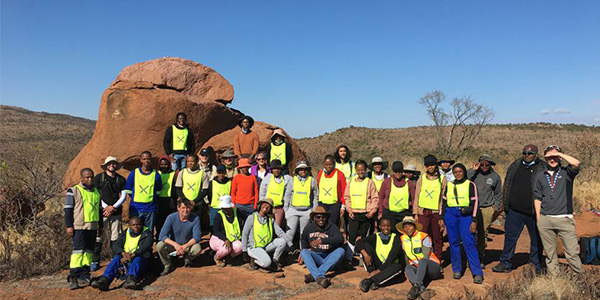
The Bushveld Geology and Metallogeny Research Chair will advance the mining industry and develop the next generation of geoscientists.
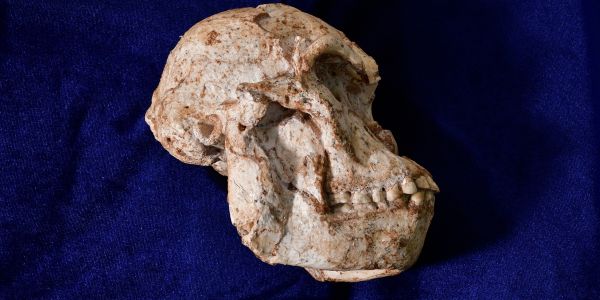
European Research Council funds project on early human evolution at Senckenberg.
.jpg)
Tiny Titans of the Permian: New anatomical description of the ‘dwarf’ pareiasaur Nanoparia luckhoffi from the Karoo Basin

The exhibition showcases the archaeological heritage and rich marine environment of the Southern Cape coastline.
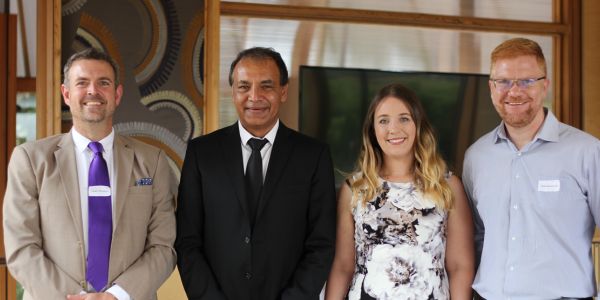
Medals for established and emerging researchers, eminent scholars inducted as Fellows.

The humble “plakkie” made its debut up to 150 000 years ago.

Sea level and climate changes altered the marine ecosystems at the South Pole 390-385 million years ago.

Superdeep diamonds formed between 650 and 450 million years ago show how continents developed and moved.

Early ancestors collected eye-catching shells that radically changed the way we looked at ourselves and others.

Discovery of two meteorites are the first to be found by a member of the public on South African soil in over 40 years.

A gigantic, ancient crocodylomorph species that was recently discovered grew slower than other large reptiles of its day, such as dinosaurs.

New research reveals that the emergence of life on Earth did not require Plate Tectonics

Ancient volcanism dating back to 3.5 billion years ago are common to Archaean cratons of South Africa, India, and Australia.
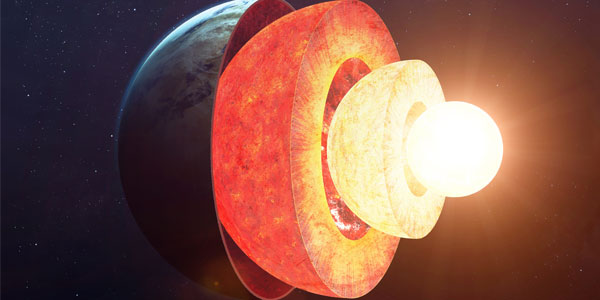
Our home planet Earth is unique, not only in its position in space but in the way it manages energy to create a comfortable spot for us to inhabit.

Fossil is described in a paper exploring the rapid turnover of top predators in African terrestrial faunas around the Permian-Traissic mass extinction.

Dr Keneiloe Molopyane joins the EC50 class of 2023, after also being selected as an Emerging Explorer for the National Geographic Society in 2021.

The testing phase of a SA-Europe partnership project this December marks a significant step forward in developing new generation seismic sensing technology.

A recent study show that magmatic ore deposits that are generally referred to form by settling of crystals in magma chambers are instead shown to form in place

Volunteerism and activism is alive among the youth as demonstrated at the annual Student Leadership Awards.
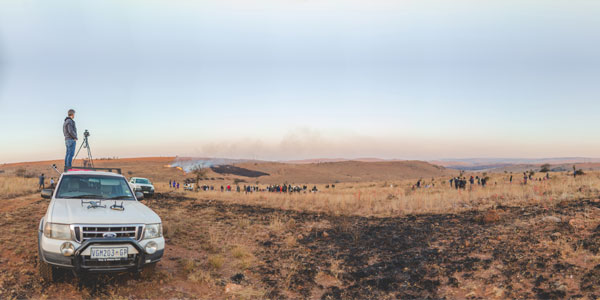
Column: Telling the stories of Wits’ research and academics might hopefully light a fire in the mind of the world’s next Einstein.

Basaltic magma chambers can grow extremely rapidly - in months to years.

Wits researchers have compelling evidence for the existence of a magma chamber deep within a South Africa’s ancient crust.

Wits hydrogeologist Prof. Tamiru Abiye is a National Research Foundation-rated scholar and winner of the 2021/22 NSTF-South32 TW Kambule Researcher Award.

Professors Shabir Madhi, Sehliselo Ndlovu and Tamiru Abiye were winners at the 2021/2022 National Science and Technology Forum (NSTF)-South 32 Research Awards.

Karoo fossils provide “smoking gun” on clues to when warm-bloodedness evolved in pre-mammalian ancestors.

New dates for Australopithecus-bearing Sterkfontein Cave deposit places South African hominin fossils at the centre of global palaeo research.

Wits geologists come up with an original interpretation for a long-standing petrological paradox – the common absence of roof rocks in basaltic magma chambers.

Twelve Wits researchers are contenders for the prestigious NSTF-South32 Awards for 2021/2022, four of whom were nominated in two categories each.

#Wits100 donation will be used to fund the Micro CT scanner upgrade to benefit palaeontologists.

Scientists find that large, long-lived, and entirely molten magma chambers did exist in Earth’s crust.

Virtual linkup was done live from the ship while the ship was on an expedition to conduct science operations on the Walvis Ridge, off the coast of Namibia.

Team of experts help search for metals and minerals needed to meet the tech demands of an evolving world.
![Life reconstruction of Australopithecus sediba com-missioned by the University of Michigan Museum of Natural History. [? Sculpture: Elisabeth Daynes / Photograph: S. Entres?sangle] Life reconstruction of Australopithecus sediba com-missioned by the University of Michigan Museum of Natural History. [? Sculpture: Elisabeth Daynes / Photograph: S. Entres?sangle]](/media/wits-university/news-and-events/images/news/2021-sept-dec/Asediba.jpg)
New lower back fossils settles a decades old debate proving early hominins used their upper limbs to climb like apes, and their lower limbs to walk like humans.

Wits researchers won six National Science and Technology Forum (NSTF)-South32 research awards .

An international Wits-led team of scientists used high-powered X-rays to show how an extinct South African dinosaur, Heterodontosaurus tucki, breathed.

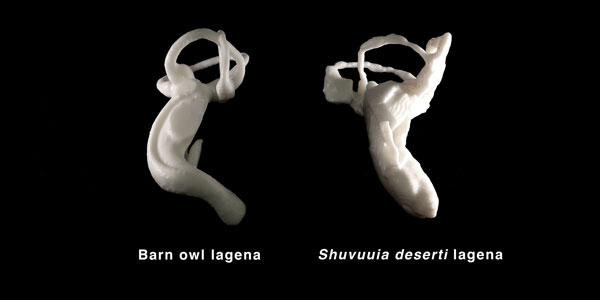
By looking at the eye bones and ear canals of extinct dinosaurs, researchers show that a small ancient predator likely had senses good as a modern barn owl.

Wits researchers report on a new phenomenon in magma chambers called “magmatic karstification”.
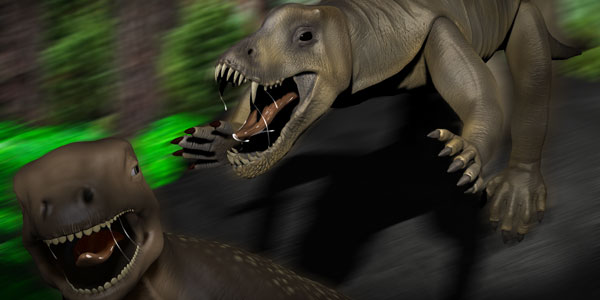
Previously thought of as heavy, slow and sluggish, the 260-million-year-old predator, Anteosaurus, was a ferocious hunter-killer.

High resolution X-ray imaging of Little Foot's skull and dentition shows Little Foot suffered periods of dietary stress and illness when she was a child.

This new Cluster will further encourage world class research through collaboration, coordination and communications.

The NRF has re-awarded A-ratings to four Wits scientists, a grading which confirms that they are recognised as leading international scholars in their fields.

Wits geophysicists have invented cost-effective and environmentally friendly seismic technologies that will contribute to sustainable mining exploration.

Wits plays key role in securing funding to develop Planetary and Space Science projects in Africa.

Paleoanthropologists have published a book on the fossils excavated from Sterkfontein Caves for the benefit of the global scientific community.

Durand uses cell death as a lens through which to examine the interconnectedness of life and death.
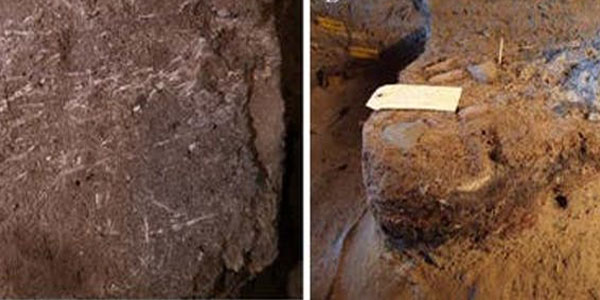
Before 200,000 years ago, close to the origin of our species, people used ash as layers for broad-leaved grasses to build their beds.

Humans prepared beds to sleep on right at the dawn of our species – over 200 000 years ago.

Three Witsies in human genetics, economic geology, and public health research data respectively have won National Science and Technology Forum (NSTF) awards.

The study challenges a recently-emerged paradigm that magma chambers are huge masses of crystals with just a very small amount of melt.

Professor Lee Berger accepts a challenge in science communications to turn a science paper into an interesting video lecture.

Twelve Wits scientists across disciplines have been nominated for NSTF-South 32 Research Awards, known as the 'Science Oscars', and eight are finalists.

Discovering a fossil site takes a lot of hard work and a little bit of luck. Professor Lee Berger describes the clues that led him to the discovery of Malapa.

Professor Lee Berger explores the origins of the this great debate and examines the arguments of the terrestrialists and the arborealists.

Gladysvale is known for its impact on the dating of cave sites in Africa and has produced some of the most spectacular faunal remains of extinct animals.

Does the fossil sample for Australopithecus africanus only represent one species. Professor Lee Berger takes on this sticky question.

Professor Lee Berger explores the use of the absolute age of fossils in questions of phylogeny, and where the age of a fossil is important.

Is there any evidence in the fossil record that giants have lived on Earth in the past? Professor Lee Berger explores this question.

Professor Lee Berger explains the context of how original fossils are preserved and explores the context of discoveries.

Professor Lee Berger explains the concept of species in palaeoanthropology.

Professor Lee Berger shows what is behind the doors of the Phillip V Tobias Fossil Hominid vault.

Professor Lee Berger introduces one of the world's longest running and richest fossil hominid sites.

Professor Lee Berger explains the mystery surrounding human relatives living in Africa during the middle Pleistocene.

In the second episode of Professor Lee Berger’s series of lectures on human origin, he delves into his favourite hominid-bearing site, Makapansgat.

Lectures will feature some of the University’s fossils, including the Taung Child, Homo naledi, Australopithecus sediba and various other fossils.

High-powered X-rays of the world’s oldest fossilised dinosaur embryos show surprising similarities to the embryos of today’s crocodiles, lizards and chickens.

Geologists found the answer as to why certain magmatic rocks have varying proportions of minerals than what is expected of their type.
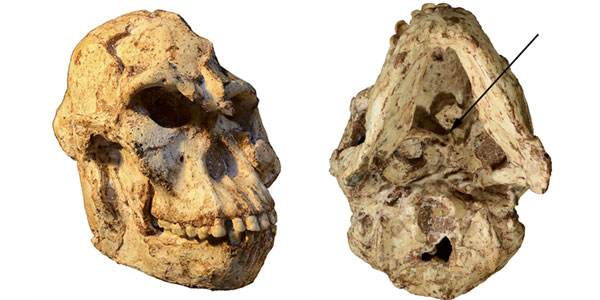
Micro-CT scanning of “Little Foot” skull reveals new aspects of the life of this more than 3-million year-old-human ancestor.

Geologists from Wits have come up with an original explanation of how nature may produce a class of magmatic rocks that are made up of only one type of mineral.

Group of students find a large haul of fossils on the first day of their dig in Oviston Nature Reserve.

The discovery also points to food being shared and the use of wooden digging sticks to extract the plants from the ground
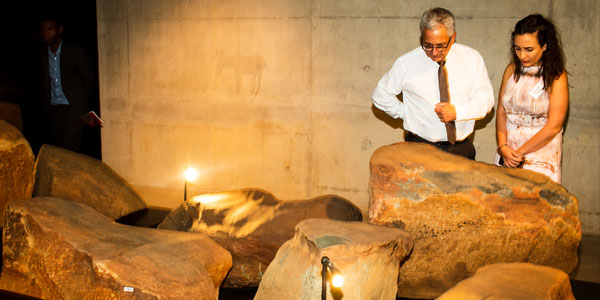
The rock art archive is the first of three new floors that will provide public access to some of South Africa's most valuable historical finds.
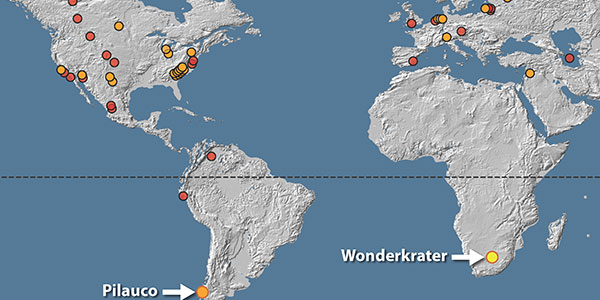
Could platinum-rich dust associated with the impact of a very large meteorite have contributed to major climatic change and extinctions 12,800 years ago?

The South African national treasures will for the first time ever go on display for international audiences, when it is exhibited in Dallas, Texas

First African evidence to support hypothesis of an asteroid impact that contributed to the extinction of large animals 12 800 years ago.

Rauisuchians fed on vegetarian dinosaurs according to Wits student Rick Tolchard.
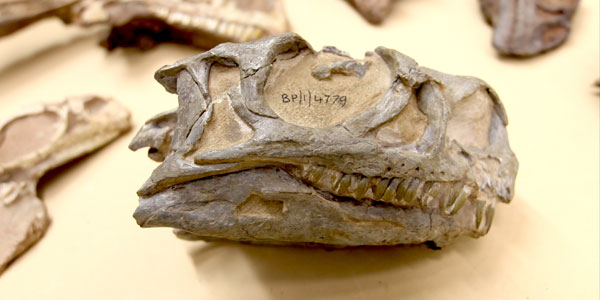
New dinosaur was discovered after it lying misidentified in the university's vaults for over 30 years.

The remains of a microscopic drop of ancient seawater was used to re-establish the date that plate tectonics started on Earth.
, Michael Westgate (PhD Candidate), Mpofana Sihoyiya (MSc candidate), Prof.jpg)
Sibanye-Stillwater has donated their 2D/3D reflection seismic data worth R50m to the Wits Seismic Research Centre of the School of Geosciences.

Wadley has been made a Fellow of The British Academy in recognition of her outstanding contribution to the field of archaeology.

Research from the Wits School of Geoscience shows how platinum deposits form in the Bushveld Complex of South Africa.

Petroleum Experts Ltd has donated an academic software licence worth R25m to the School of Geosciences.

Prehistoric bestiary is full of remarkable creatures and fearsome predators.

Autralopithecus sediba is not the missing link that connects modern man to its more primitive ancestors.

Four papers published in a special issue of the open access journal, PaleoAnthropology, address critiques of Sediba, confirming it is indeed a unique species.

Free virtual reality experience provides global access to the Dinaledi caves to researchers, students and amateur explorers.

The Academy for Science SA (ASSAf) awarded Berger its Gold Medal for excellence in the application of outstanding scientific thinking in service to society.

A team of international scientists, led by Professor Jonah Choiniere from Wits, described a new species of a giant dinosaur that has been found near Clarens.
The National Research Foundation has recognised Wits researchers for advancing their fields.
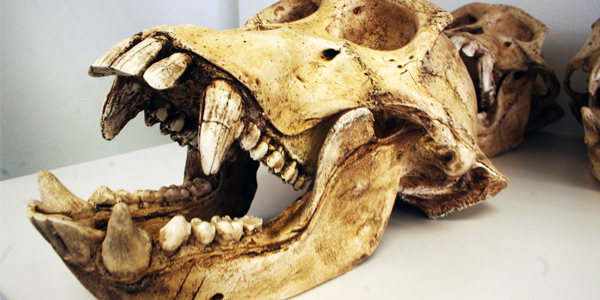
The call by students to “decolonise science” still rings in many South African academics’ ears.

New fossils from north China shed light on the incremental evolution of insect-eating dinosaurs.

The MOU is part of the Museum’s new focus on human origins, plans to increase research, produce traveling exhibitions, and cultivate scientific communications.

Many Norwegian researchers had a close relationship with Nelson Mandela but few as close as Christopher Henshilwood, also of Wits ESI, did.

School of Geosciences congratulated on “one of the best” International Platinum Symposiums ever.

As a modern apex preditor, the crocodile's mode of attack - its mouth - had humble beginnings

Mining is a key contributor to South Africa’s economic development but its effect on the environment could spell disaster.

A study of the tooth sockets of one of the world’s most famous fossil skulls, “Mrs” Ples, has made scientists think differently about “her” sex.

CT-scan study of Wits PHD student makes it possible to 3D print the skull of the dinosaur species Massospondylus that roamed South Africa 200 million years ago.

Wits palaeoanthropologist tops 25 300 others in a new study on highly visible scientists.

After 20 years of painstaking excavation and preparation, Professor Ron Clarke introduces the most complete Australopithecus fossil ever found to the world.

Two scientists from Wits University are on the list of Highly Cited Researchers in the world.

Collaboration between Wits and the new CoE at University of Bergen is essential to answer some of the most fundamental questions about our ancestry.

Fossil records near the lost Gondwanides mountains show that the Permian-Triassic extinction started 1 million years prior to what was previously believed.

New study finds 'staying longer at home' was key to Stone Age technology change some 60 000 years ago.

The National Research Foundation (NRF) has awarded an A1-rating to Professor Lyn Wadley.

AfricaArray Field School upskills geophysical talent throughout Africa in response to the growing demand for highly trained geoscientists and researchers.
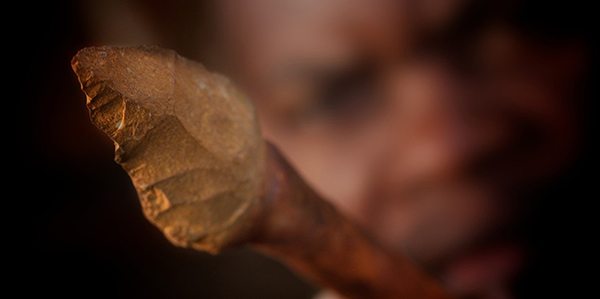
Early human's ability to survive through prolonged arid areas in southern Africa developed from their ability to innovate and adapt.

250 000 year old species from Rising Star Cave raises more questions about our origins.

New laboratory will work closely with the University of Johannesburg to offer southern African scientists a local solution for isotope analysis.

With its new Centre of Excellence status, the Centre for Early Human Behaviour will receive funding amounting to about R540 million over the next 10 years.

Far beneath Mauritius’ inactive volcanoes lies an astonishing, important piece of the Earth’s history: a fragment of ancient continental crust.

CT scans of fossils of the pre-mammalian reptile, Euchambersia, shows anatomical features, designed for venom production.

Lava-covered piece of continent is an ancient remnant, left over from the break-up of the supercontinent, Gondwana, which started about 200 million years ago.

Humans living in South Africa in the Middle Stone Age used these techniques to vastly improve their living conditions during the era.

The genome sequencing of the algae, Gonium pectorale, provides valuable clues into how and why single cells live together in groups.
-399x533.JPG)
Specimens from the Homo genus and can be associated with early stone tools dated to 2.18 million years ago.

Biting too hard would have dislocated jaw of Australopithecus sediba